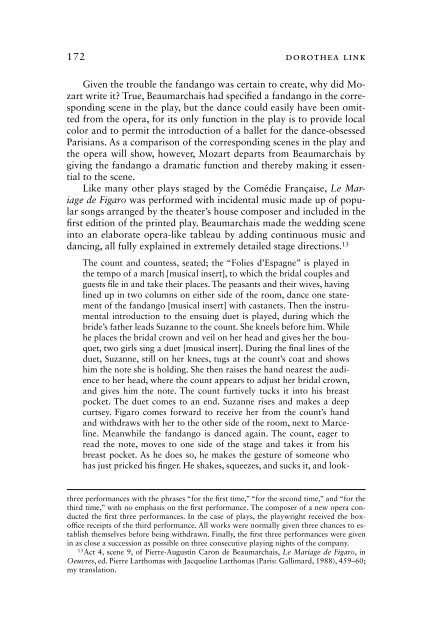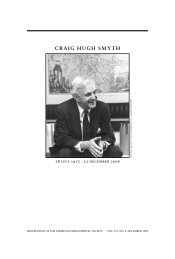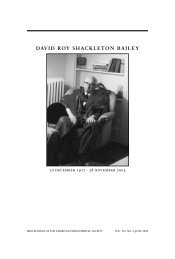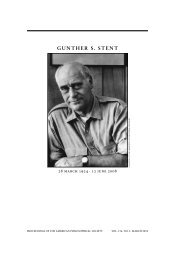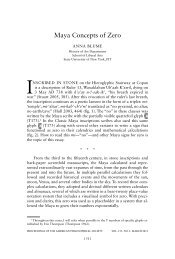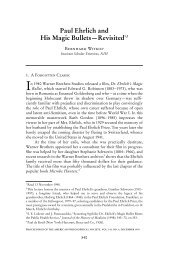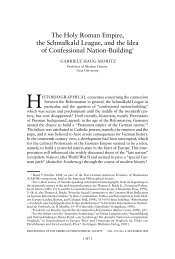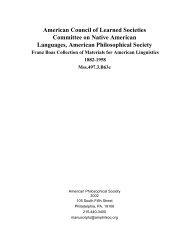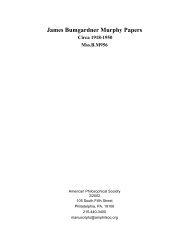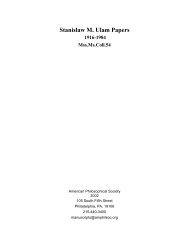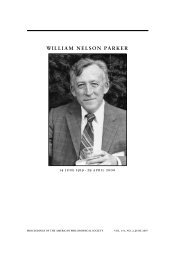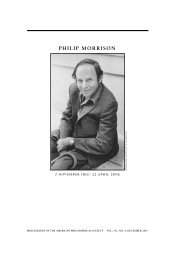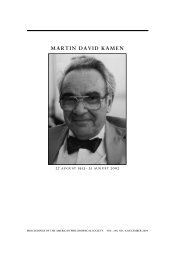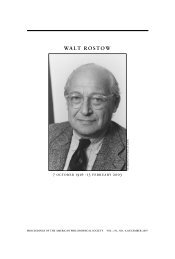Performing the Fandango in Mozart's Le nozze di Figaro1
Performing the Fandango in Mozart's Le nozze di Figaro1
Performing the Fandango in Mozart's Le nozze di Figaro1
Create successful ePaper yourself
Turn your PDF publications into a flip-book with our unique Google optimized e-Paper software.
172 doro<strong>the</strong>a l<strong>in</strong>k<br />
Given <strong>the</strong> trouble <strong>the</strong> fandango was certa<strong>in</strong> to create, why <strong>di</strong>d Mozart<br />
write it? True, Beaumarchais had specifi ed a fandango <strong>in</strong> <strong>the</strong> correspond<strong>in</strong>g<br />
scene <strong>in</strong> <strong>the</strong> play, but <strong>the</strong> dance could easily have been omitted<br />
from <strong>the</strong> opera, for its only function <strong>in</strong> <strong>the</strong> play is to provide local<br />
color and to permit <strong>the</strong> <strong>in</strong>troduction of a ballet for <strong>the</strong> dance-obsessed<br />
Parisians. As a comparison of <strong>the</strong> correspond<strong>in</strong>g scenes <strong>in</strong> <strong>the</strong> play and<br />
<strong>the</strong> opera will show, however, Mozart departs from Beaumarchais by<br />
giv<strong>in</strong>g <strong>the</strong> fandango a dramatic function and <strong>the</strong>reby mak<strong>in</strong>g it essential<br />
to <strong>the</strong> scene.<br />
Like many o<strong>the</strong>r plays staged by <strong>the</strong> Comé<strong>di</strong>e Française, <strong>Le</strong> Mariage<br />
de Figaro was performed with <strong>in</strong>cidental music made up of popular<br />
songs arranged by <strong>the</strong> <strong>the</strong>ater’s house composer and <strong>in</strong>cluded <strong>in</strong> <strong>the</strong><br />
fi rst e<strong>di</strong>tion of <strong>the</strong> pr<strong>in</strong>ted play. Beaumarchais made <strong>the</strong> wedd<strong>in</strong>g scene<br />
<strong>in</strong>to an elaborate opera-like tableau by add<strong>in</strong>g cont<strong>in</strong>uous music and<br />
danc<strong>in</strong>g, all fully expla<strong>in</strong>ed <strong>in</strong> extremely detailed stage <strong>di</strong>rections. 13<br />
The count and countess, seated; <strong>the</strong> “Folies d’Espagne” is played <strong>in</strong><br />
<strong>the</strong> tempo of a march [musical <strong>in</strong>sert], to which <strong>the</strong> bridal couples and<br />
guests fi le <strong>in</strong> and take <strong>the</strong>ir places. The peasants and <strong>the</strong>ir wives, hav<strong>in</strong>g<br />
l<strong>in</strong>ed up <strong>in</strong> two columns on ei<strong>the</strong>r side of <strong>the</strong> room, dance one statement<br />
of <strong>the</strong> fandango [musical <strong>in</strong>sert] with castanets. Then <strong>the</strong> <strong>in</strong>strumental<br />
<strong>in</strong>troduction to <strong>the</strong> ensu<strong>in</strong>g duet is played, dur<strong>in</strong>g which <strong>the</strong><br />
bride’s fa<strong>the</strong>r leads Suzanne to <strong>the</strong> count. She kneels before him. While<br />
he places <strong>the</strong> bridal crown and veil on her head and gives her <strong>the</strong> bouquet,<br />
two girls s<strong>in</strong>g a duet [musical <strong>in</strong>sert]. Dur<strong>in</strong>g <strong>the</strong> fi nal l<strong>in</strong>es of <strong>the</strong><br />
duet, Suzanne, still on her knees, tugs at <strong>the</strong> count’s coat and shows<br />
him <strong>the</strong> note she is hold<strong>in</strong>g. She <strong>the</strong>n raises <strong>the</strong> hand nearest <strong>the</strong> au<strong>di</strong>ence<br />
to her head, where <strong>the</strong> count appears to adjust her bridal crown,<br />
and gives him <strong>the</strong> note. The count furtively tucks it <strong>in</strong>to his breast<br />
pocket. The duet comes to an end. Suzanne rises and makes a deep<br />
curtsey. Figaro comes forward to receive her from <strong>the</strong> count’s hand<br />
and withdraws with her to <strong>the</strong> o<strong>the</strong>r side of <strong>the</strong> room, next to Marcel<strong>in</strong>e.<br />
Meanwhile <strong>the</strong> fandango is danced aga<strong>in</strong>. The count, eager to<br />
read <strong>the</strong> note, moves to one side of <strong>the</strong> stage and takes it from his<br />
breast pocket. As he does so, he makes <strong>the</strong> gesture of someone who<br />
has just pricked his fi nger. He shakes, squeezes, and sucks it, and look-<br />
three performances with <strong>the</strong> phrases “for <strong>the</strong> fi rst time,” “for <strong>the</strong> second time,” and “for <strong>the</strong><br />
third time,” with no emphasis on <strong>the</strong> fi rst performance. The composer of a new opera conducted<br />
<strong>the</strong> fi rst three performances. In <strong>the</strong> case of plays, <strong>the</strong> playwright received <strong>the</strong> boxo<br />
ffi ce receipts of <strong>the</strong> third performance. All works were normally given three chances to establish<br />
<strong>the</strong>mselves before be<strong>in</strong>g withdrawn. F<strong>in</strong>ally, <strong>the</strong> fi rst three performances were given<br />
<strong>in</strong> as close a succession as possible on three consecutive play<strong>in</strong>g nights of <strong>the</strong> company.<br />
13 Act 4, scene 9, of Pierre-August<strong>in</strong> Caron de Beaumarchais, <strong>Le</strong> Mariage de Figaro, <strong>in</strong><br />
Oeuvres, ed. Pierre Larthomas with Jacquel<strong>in</strong>e Larthomas (Paris: Gallimard, 1988), 459–60;<br />
my translation.


